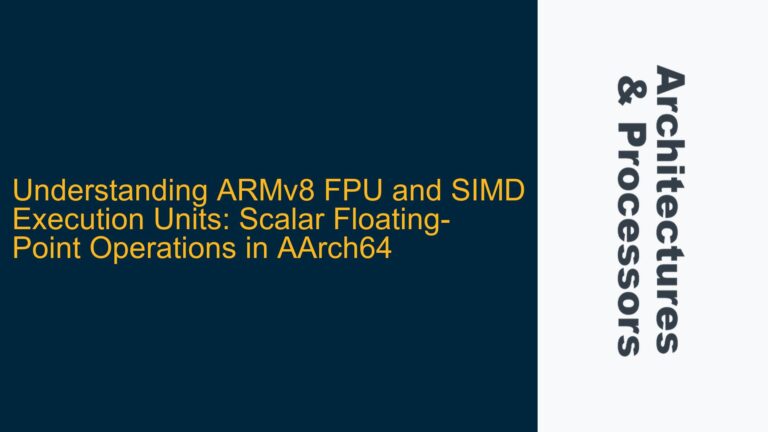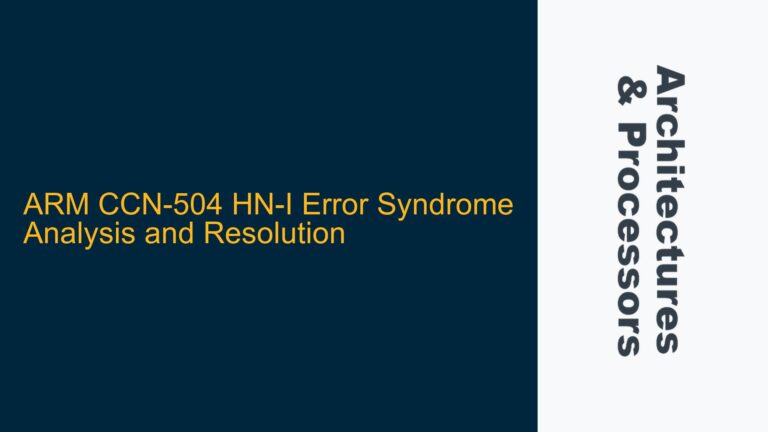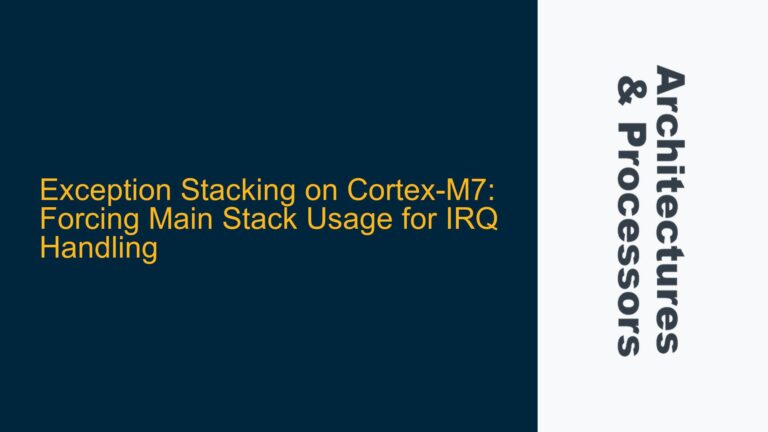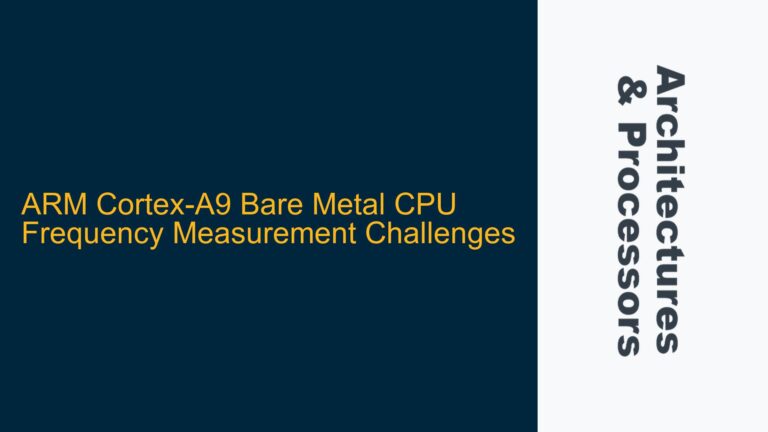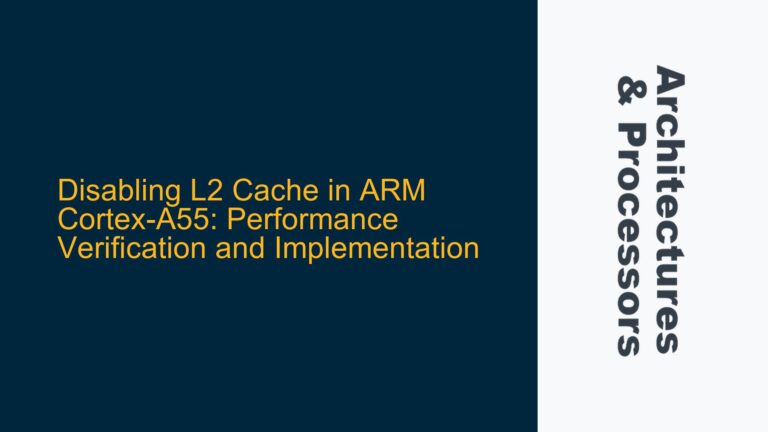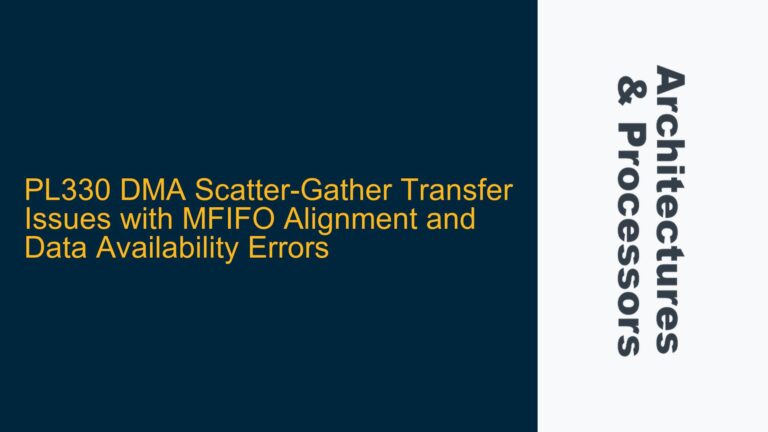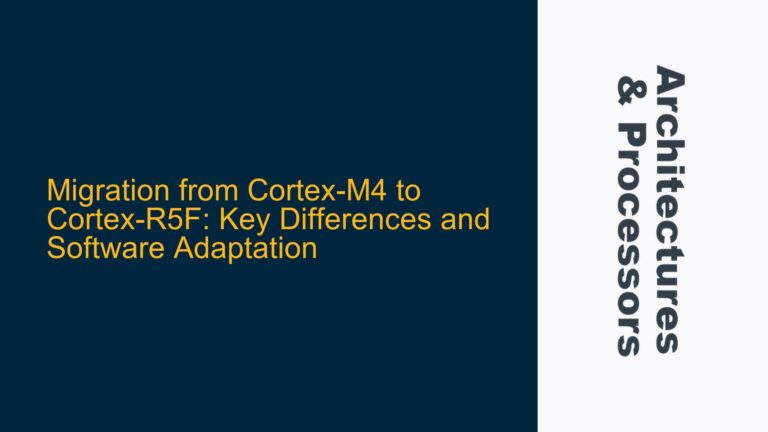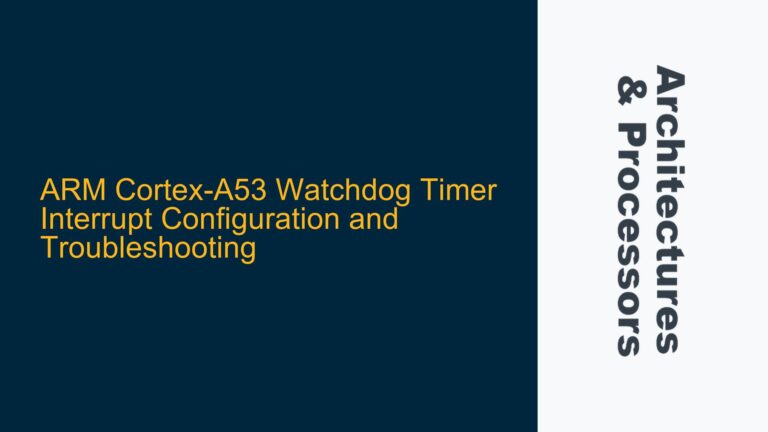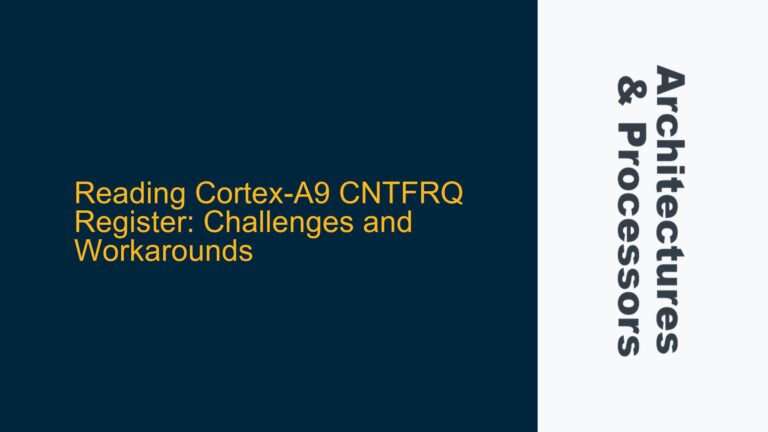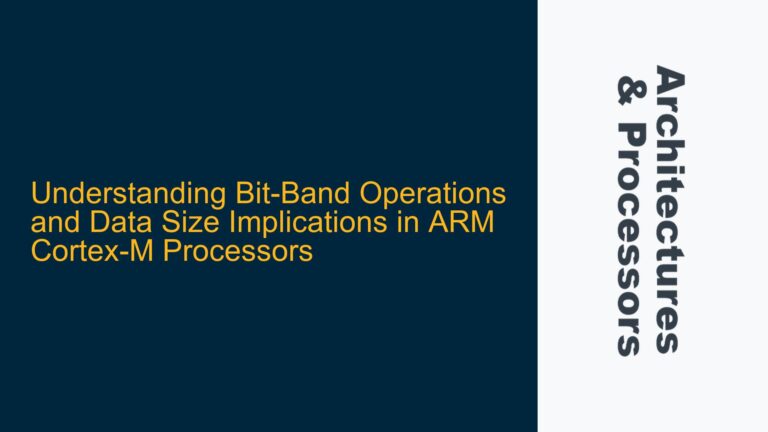ARMv8 FPU and SIMD Execution Units: Scalar Floating-Point Operations in AArch64
ARMv8 FPU and SIMD Execution Units: Scalar Floating-Point Operations in AArch64 The ARMv8 architecture introduces significant advancements in floating-point and SIMD (Single Instruction, Multiple Data) capabilities, particularly with the integration of Advanced SIMD (NEON) and VFP (Vector Floating-Point) technologies. However, the relationship between these units and their roles in executing scalar floating-point operations can be…
